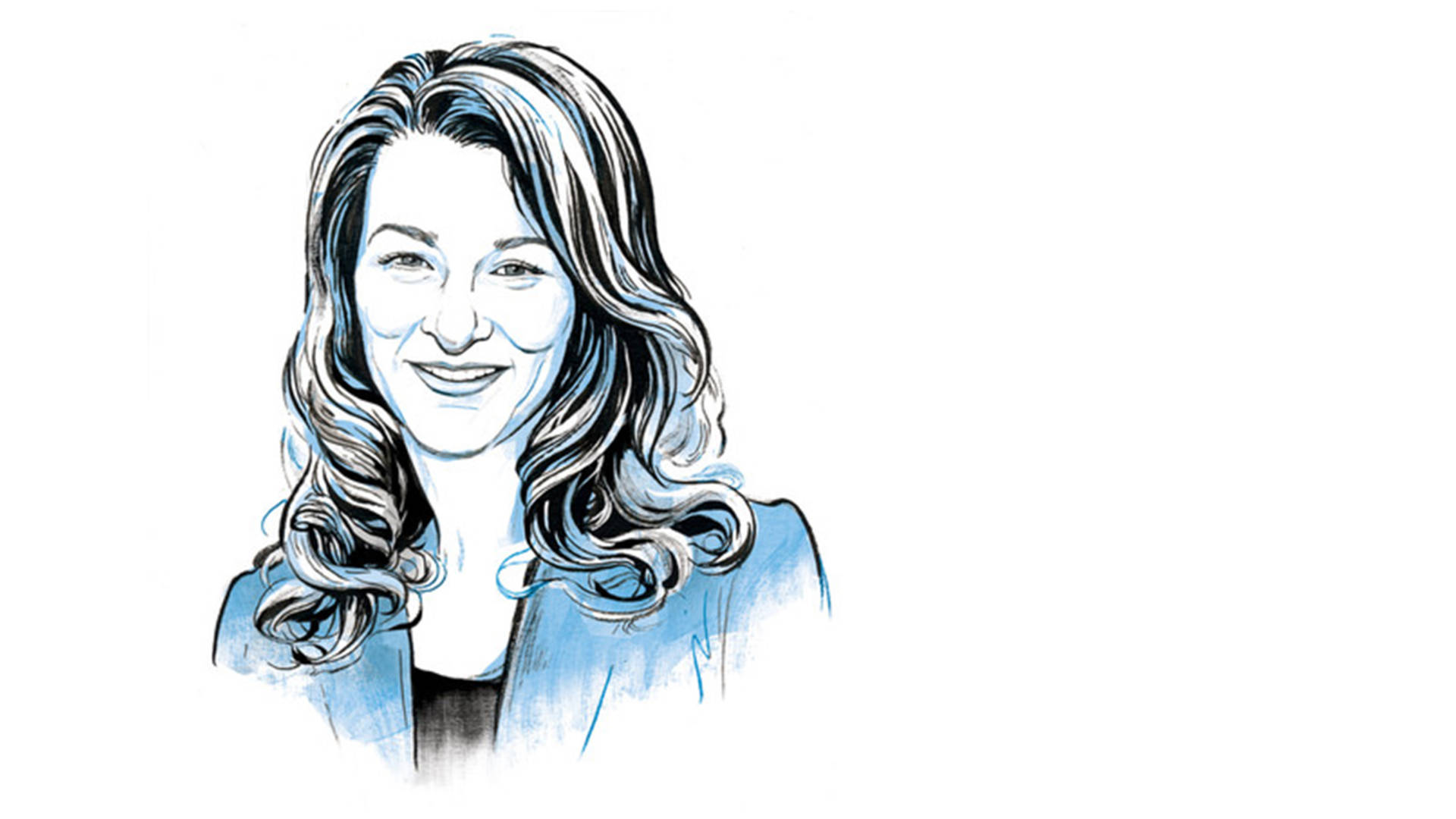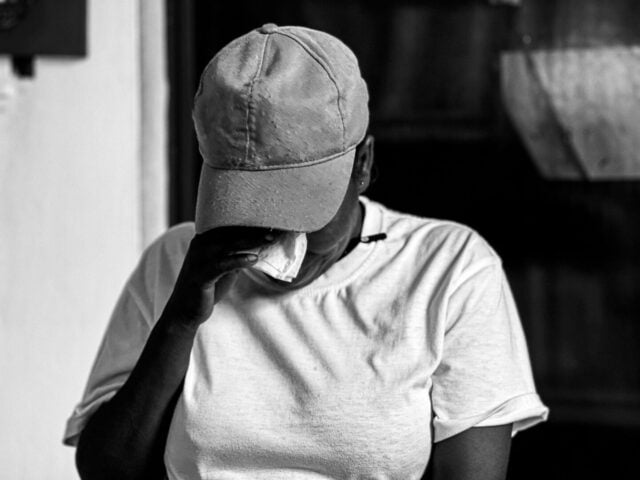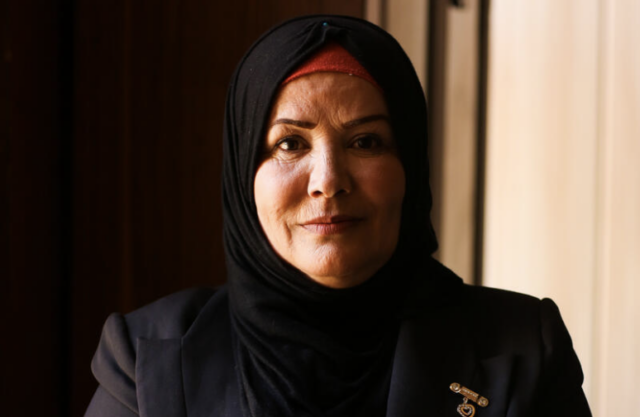Melinda Gates attended a Catholic high school whose motto is serviam — I will serve. The Ursuline nuns taught students like Melinda that serving even one person makes a difference.
“That’s what faith in action means to me,” says Melinda, co-chair of the Bill & Melinda Gates Foundation. “It’s when we turn toward our neighbors instead of away and use our lives to lift up others. And it’s something everyone can do — it doesn’t matter who you are or what kind of resources you have. It’s something that comes from the heart.”
World Vision interviewed Melinda about how that outlook has fueled her work with women through the Bill & Melinda Gates Foundation and its partnership with World Vision.
In your recent 2016 annual letter, you wrote about “time poverty.” Can you explain what this means and how it affects women in the developing world?
In every country on the planet, women spend more time than men on routine household chores like cooking, cleaning, and caring for children. In the U.S., that time gap is about an hour and a half. But it gets bigger in places where there’s no running water or electricity since fetching water and chopping firewood are time-consuming tasks that usually fall to women. In India, for instance, women spend five hours more than men do taking care of their families and their homes, every single day.
This gap in unpaid labor is the gender gap no one is talking about, even though, if you look closely, most of us can see it playing out right in our own homes. Most of us know families where the chores tend to default to the mom just because society assumes it’s her job to make sure the cooking and cleaning and laundry get done. That’s why TV commercials only show men doing laundry, cooking, or running after kids about 2% of the time. And this is carrying over into the next generation, too. American girls do about two hours more chores per week than boys do, and they’re less likely to get paid for them. I’ve actually caught myself asking my daughter Phoebe to tidy up the living room while letting my son off the hook.
The good news is that once we start recognizing these hidden norms, we can start changing them. So I want to make sure we shine a light on this issue.
Both World Vision and our foundation believe that every child, everywhere, deserves an equal chance to live a full, healthy, and productive life.—Melinda Gates
A few years ago, you and your daughter lived for a few days with Anna and Sanare in their family’s hut in rural Tanzania and got to see “time poverty” firsthand. What stood out about that experience for you and your daughter?
We both noticed right away that Anna worked very long days and was busy almost every waking moment with chores like building fires, cooking, cleaning, fetching water, chopping wood, milking the goats, and taking care of her kids. I kept thinking that if she just had running water in her house, it would have saved her hours each day. She was so hardworking and entrepreneurial; I know she would have put that time to good use.
My daughter Jenn and I were also both really moved by our interactions with Anna and Sanare’s 13-year-old daughter, Grace. Anna and Sanare told us that they were concerned about the fact that Grace was falling behind her twin brother in school — and unfortunately, it wasn’t hard to see why.
Because women and girls are the ones society expects to do the majority of household chores, Grace had responsibilities around the house that her brother didn’t. By the time she was done with her chores, it was usually dark outside — and in a house with no electricity, studying in the dark is all but impossible. It was just a really clear example of the way that these expectations about how women and girls spend their time can limit their prospects for the future.
What have women in the developing world told you about how life would change if they had more time?
When we were in Tanzania, Anna was just about to start a small poultry business for extra income. The family talked about it nonstop. She and Sanare were so excited about what that income was going to mean for their kids. I know that if Anna had more free time, she’d be growing that business and investing the proceeds right back into her family. And I know the same is true for a lot of other women who have similar ideas they’d like to pursue but no time to do so.
Some women would use that time to start businesses or work outside the home, some would use it to take their children or themselves to the doctor, some would just use it to read a book. But it’s pretty clear that extra time would help women be healthier and more prosperous and put families on the path out of poverty.
In addition to time, what else have you learned about women and their health that is important to understand?
I met a nurse in Tanzania who put it so clearly when she said that the most important part of her job is taking care of women’s health because when a mother is sick, the whole household suffers. We were at a vaccine clinic in Dar es Salaam, surrounded by mothers who had been waiting on hard benches for hours and hours to get their kids vaccinated — so I didn’t have to look far to understand exactly what she meant. In developing countries, women are often the ones who set the next generation up for success by prioritizing things like vaccines, nutritious food, and education for their kids. They play a crucial role in their households and communities — and when a woman falls sick or dies in childbirth, there’s often no one to fill that role.
So to answer your question, it’s important for all of us to recognize that maternal and child health are interconnected, and that, together, they form the cornerstone of healthy, thriving communities. Healthier women give birth to healthier babies. Healthier babies grow into healthier children. Healthier children learn better in school and grow up to be more productive members of their community.
When you improve health outcomes for women and children, you improve life for everybody. For all these reasons, investing in maternal and child health is one of the best investments we can make in our future. A healthy mom can do the world a lot of good.
When you improve health outcomes for women and children, you improve life for everybody.—Melinda Gates
What was the biggest surprise you’ve learned about health through your work?
When Bill and I started our foundation 16 years ago, I began making learning trips to the world’s poorest places. I knew that by talking to the people who lived there, I was going to learn a lot about the everyday realities of extreme poverty. What I didn’t predict was that women were going to keep bringing up a topic I hadn’t expected to discuss: healthy timing and spacing of pregnancies. It’s a central part of keeping mothers and their children healthy but one that is often overlooked. In places like Africa and India, for example, when a woman spaces her births by at least three years, her newborn child is twice as likely to survive their first year of life. That’s a very different reality than what we face here in the U.S.
Through those conversations in the field and my subsequent research, I learned that there are an estimated 225 million women in developing countries who don’t want to get pregnant right now but don’t have access to contraceptives. So many women have told me that they want to be able to plan their pregnancies to protect their health and their children’s health and to make sure that their families don’t grow bigger than they can afford to care for. I’ll never forget Sadi, a woman I met in Niger, who pleaded with me, “It wouldn’t be fair for me to have another child. I can’t even afford to feed the ones I have. Can’t you see we’re suffering?”
That suffering is absolutely real. And the benefits to a woman and her family when she gains access to contraceptives, or fertility awareness-based approaches also known as natural family planning, are real, too. When women can plan and space their pregnancies, they’re more likely to survive childbirth in the first place, and afterward, they are healthier, and their children are healthier, better-fed, and better-educated since their parents are more likely to be able to afford to pay school fees. And that’s an incredible thing.
Research shows that the healthy timing and spacing of pregnancies is key to keeping mothers and children safe in the developing world, but terms such as “family planning” can be polarizing. What are some of the big misunderstandings about this topic, and how can those misconceptions be corrected?
I had a great conversation with a young woman in Kenya who told me we shouldn’t even call it “family planning”; we should call it “future planning.” And she had a good point. Because family planning is almost too narrow of a term to describe what’s at stake here.
As a mom of three, I know that pregnancy and childbirth should be times of great joy — but in the poorest places in the world, it’s an incredibly vulnerable time for both mothers and children. Despite great strides to save women’s lives, 800 women still die every single day from causes related to pregnancy and childbirth. And children whose mothers die in childbirth are less likely to live to age 5.
But on the other hand, when women are able to wait at least three years between the births of their children, their children are twice as likely to survive their first year and 35% more likely to reach their fifth birthday. And as I’ve already mentioned, the mothers themselves are much more likely to survive childbirth. So when we talk about ensuring women have access to contraceptives, what we’re really talking about is giving women the ability to make the best possible decisions for themselves, their families, and their families’ futures.
That’s what faith in action means to me. It’s when we turn toward our neighbors instead of away and use our lives to lift up others And it’s something everyone can do. …—Melinda Gates
In the summer you met with faith leaders in Kenya about the work being done with women and girls. Why are faith leaders critical partners to bringing about change?
Because faith leaders hold a position of moral authority in the communities they serve, people look to them for guidance on issues like home life and marriage, so these leaders can play a huge role in helping shift cultural norms. What’s more, faith leaders are able to get a message out to the people who worship with them through the sermons they preach or the prayer sessions they lead.
When I was in Kenya in June, I met a man named Pastor David, who grew up in Western Kenya and was against contraceptives until he learned about the enormous impact they can have on the health of women and their children. Now, he preaches about the benefits of healthy timing and spacing of pregnancies all the time and quotes passages from Genesis and Timothy to support his case. A few years ago, I met with imams in Senegal who had also started teaching their congregations about contraceptives after one of them lost a wife in childbirth. When people hear these messages from faith leaders that they trust, that really goes a long way.
The Bill & Melinda Gates Foundation is committed to ensuring that people survive and thrive. How does your partnership with World Vision help achieve that important goal?
Both World Vision and our foundation believe that every child, everywhere, deserves an equal chance to live a full, healthy, and productive life. And to help make that vision of our world a reality, we’ve supported World Vision’s work to strengthen community understanding about healthy timing and spacing of pregnancies by engaging with local religious leaders and faith-based communities to make sure that women have the information they need to make the best decisions for themselves and their families.
For example, we know that the risk of potentially deadly complications from labor and delivery increases when women are under 18, over 34, or when the pregnancy is within six months of a miscarriage or two years of a previous full-term pregnancy. By working together to get that information out to women and their families, we’re empowering women with the knowledge they need to keep themselves and their families healthy and thriving.


